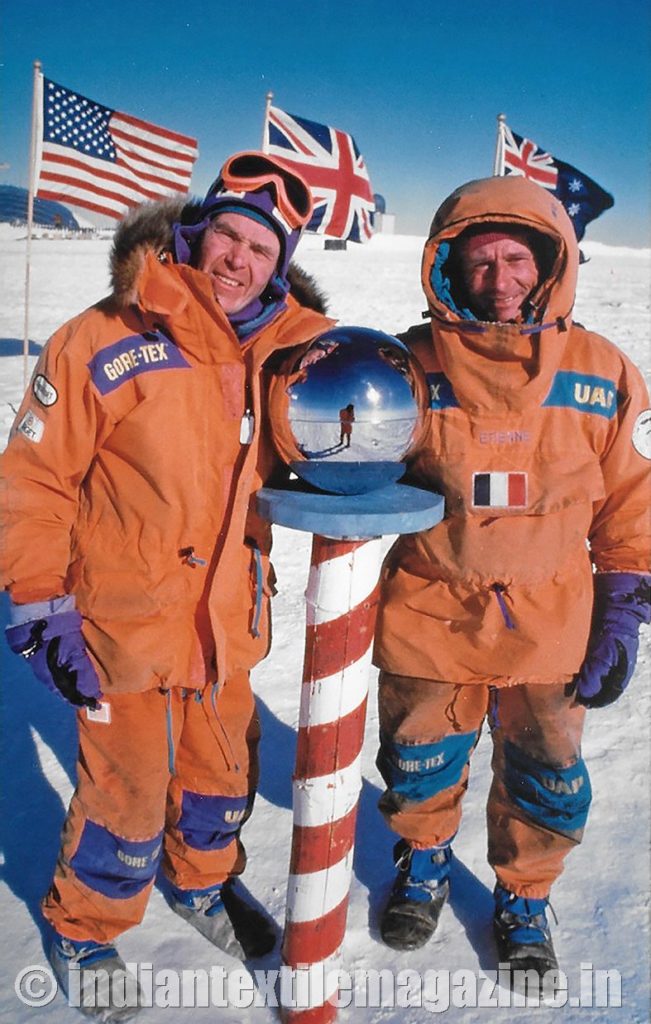The global textile and apparel industries have been at the forefront when it comes to creating interesting stories for their brands. That is because innovations have allowed these stories to be possible.
On reading up about the innovations happening in the textile industry, it is actually mind boggling, how many innovations are happening. New materials, new blends, more environmentally friendly ways to produce some not-so-eco-friendly materials. It’s endless.
While some of these innovations have gone on to be branded, there are many that have not, despite having tremendous potential and not being expensive. The question is which horse to back, as in which materials have the most potential. And the bigger question is ‘which brand will take the lead.’
This series of articles look at some examples of brands that have taken the lead. They have all used a principle called ‘Ingredient Branding’.
Ingredient branding does one of the most important things any manufacturer desires. It gets them a premium. And that is possible, because the ingredient brand has invested in building a brand. It talks to the end-user within the earshot of their customers. This creates a ‘PULL’ for finished products that use the ingredient brand and hence allows the finished product to charge a premium too. This eventually leads to an overall improvement of the product quality all around, benefiting the entire industry.
A quick short explanation of what ingredient branding is that has so many benefits. It is the branding of a component or an element that goes into making the finished product which then uses this ingredient brand to sell.
What is interesting is how ingredient branding has been used to solve very different marketing challenges. We will see that over this series of articles.
Let’s look at the first of four examples in this write-up.
Gore-Tex
This is a very well-known brand in cold climate regions of Europe and the US. So to understand the product, it is a material when used makes your outerwear jacket and pants not just water resistant, but also allows air to pass in and out, making it waterproof yet breathable. So you stay dry and warm and don’t sweat.
This amazing ingredient has a pore size that is 20,000 times smaller than a water droplet and 700 times bigger than water vapour. And from this ingredient was born the breathable jacket. But that is not where it stopped. The Gore-Tex ingredient is used for gloves, shoes and pants.
Gore-Tex did some fabulous Consumer Engagement activities well before they were called that. It was a torture test for the brand. For a NASA space expedition in 1981, Gore-Tex was the material used for the space suit. When NASA uses your product, the world knows it would have been vigorously tested. If Gore-Tex can withstand space, it sure must be good.
Also in an Antarctica expedition in 1989, all the outerwear for the entire crew was made from Gore-Tex. Another great way to showcase just how good your product is. Gore-Tex publicized both these events. Both the examples are great cases of putting your product to test in extreme conditions.
It also decided to speak to the end-user through an advertising campaign with a tag line of ‘Guaranteed to Keep You Dry’, which it uses till today.
Initially the company was trying to sell the finished products like jackets, pants and gloves to end-users. But they realized that in order for them to maintain quality of their Gore-Tex material they needed to expand operations. And hence they gravitated towards supplying material to other companies that make the finished product. Jackets that use the Gore-Tex material carry a Gore-Tex label and command a price premium.
Now, Gore-Tex supplies this material to multiple outdoor brands that use it as an ingredient brand and charge the end-user a premium for it, ranging from 10% to 40% over similar products not using Gore-Tex. It has 80 brand tie-ups, e.g., North Face, Adidas, Ecco, Quiksilver, Oakley, Under Armour, Timberland and many more and has a 70% share of the waterproof, breathable jacket market.
Three things to learn from this case:
- Gore-Tex realized early that they should focus on remaining a component and not selling finished product to end-users. They realized it was against their core competence.
- Showcasing your product efficacy through torture test moments is a great way to get quick publicity and convince people of the benefits.
- Branding the ingredient will get you premium, provided your product works and you brand well.
The author of this article works at Lowe Lintas. A seasoned professional with over 2 decades of experience, working on some of the agency’s biggest clients. Lowe Lintas manages the most brands from India’s top 10 most trusted brands. Find him at abhimanyu.mathur@lowelintas.in
By Abhimanyu Mathur, Executive Vice President, Lowe Lintas



